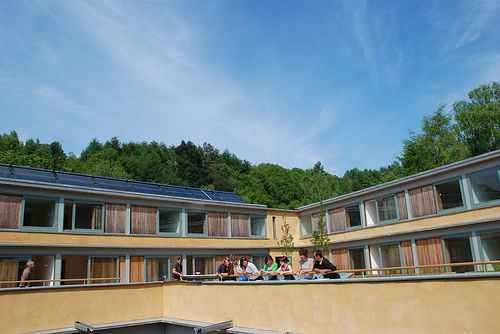Georgia Tech’s Funding Revolution: How One University Is Rewriting the Rules of Higher Education Finance
Georgia Tech’s Forward-Thinking Fundraising Model: A Blueprint for Sustainable Higher Education Funding in a Dynamic Landscape
Introduction: In an era of shifting financial priorities, universities worldwide are seeking innovative strategies to secure their future. Georgia Tech has emerged as a leader in this challenge, pioneering a comprehensive fundraising approach that leverages strong industry partnerships and broad alumni engagement. This article explores how Georgia Tech’s model provides a viable blueprint for other institutions aiming to build a more resilient and sustainable financial foundation.
Securing Industry Funding: A 28% Increase Amidst Economic Challenges

While the national average for industry funding increased by just 6%, Georgia Tech has demonstrated remarkable success, securing $70 million in industry funding this year—a substantial 28% increase. This now accounts for 15% of the university’s total research funding. This achievement is particularly impressive given the broader trend of declining federal research budgets, highlighting Georgia Tech's strategic prowess in university-industry collaboration.
The university's success is rooted in its commitment to fostering deep, collaborative partnerships with prominent corporations like Boeing and Siemens. Instead of relying on one-time donations, Georgia Tech creates structured engagements that empower companies to co-design research problems, integrate embedded corporate researchers directly on campus, and implement joint "work-for-hire" projects that lead to direct commercial pilots. This innovative strategy has earned Georgia Tech the reputation as "the MIT of the South" among venture capital firms and has expanded the number of active industry contracts from 245 active licenses to over 700 active agreements in the last decade. Such long-term engagement not only ensures a consistent cash flow but also solidifies the university's position as a premier hub for applied innovation and research.
Beyond Funding: The Far-Reaching Impact of Industry Collaboration
- Enhanced Student Training: Students are directly embedded into funded projects, transforming every grant dollar into support for a tuition-paying research assistant, providing invaluable real-world experience.
- Accelerated Technology Transfer: The university consistently ranks among the top 10 nationally in licensing revenue, effectively bringing cutting-edge research to market.
- Strengthened University-to-Industry Pipeline: A prime example is the Advanced Technology Development Center (ATDC), a Georgia Tech incubator that has successfully launched over 180 startups, attracting more than $3 billion in investment since its inception.
Faculty members report that 72% of new research proposals now include plans for private-sector follow-on funding. The provost's office credits this metric for providing a crucial buffer for research labs when NIH or NSF proposals face denial. Consequently, peer universities are frequently visiting Atlanta to study Georgia Tech’s successful playbook for a sustainable financial strategy in higher education.
Democratizing Fundraising: Actively Engaging a Broader Alumni Network

In parallel with its industry efforts, Georgia Tech has redefined its alumni fundraising strategy, adopting methods more commonly seen in political campaigns than traditional higher education development offices. Rather than exclusively pursuing high-net-worth donors, the university launched the widely successful “6 Saturdays a Year” campaign, which encourages every graduate to contribute as little as $12 per month. This targeted micro-gift outreach—utilizing text messages, peer-to-peer calls, and class-year challenges—has attracted 97,000 first-time donors since 2022. This initiative has significantly boosted overall annual alumni giving from $67 million to $124 million, all without a single nine-figure pledge.
Powering this impressive surge is a sophisticated data-driven machine. The Office of Development established an in-house predictive-analytics team that meticulously analyzes public salary and engagement data. This allows them to precisely tailor ask amounts to each individual’s giving capacity. Gamified leaderboards for various classes and geographic clubs have further amplified friendly rivalry, reinforcing a strong culture of collective ownership among alumni. As a direct result, while median gifts have decreased to $113, total revenue has more than doubled, proving that inclusive fundraising strategies can achieve remarkable scale.
Balancing Innovation with Robust Risk Mitigation
Despite its significant successes, Georgia Tech transparently acknowledges potential risks associated with its innovative models:
- Conflicts of interest that may arise from industry-defined research agendas.
- Over-reliance on the business cycles of a single sector, particularly in specialized niches like semiconductor, defense, and fintech.
To effectively mitigate these concerns, the university implemented the “Industry Partnership Integrity Portal”, a publicly accessible dashboard that flags every consultation contract exceeding $250,000. Furthermore, an independent Corporate Relations Oversight Board, comprising 15 faculty members and 2 student-elected seats, holds the authority to veto any agreement that could potentially compromise academic freedom or ethical standards. Simultaneously, traditional fundraising efforts remain robust and active. The “CREATE-X” endowment drive, for example, successfully raised $800 million in pure philanthropy over the past four years, with all funds earmarked for unrestricted academic priorities. This keeps the university well on track toward its ambitious $2 billion campaign goal by 2027. These combined safeguards collectively form a multi-pronged approach that skillfully balances institutional ambition with essential prudence.
Conclusion: A Sustainable Path Forward for Higher Education Institutions

Georgia Tech’s experience unequivocally demonstrates that universities can indeed flourish, even amidst federal budget austerity and shifting financial landscapes. The strategic combination of co-created industry partnerships, data-driven mass-alumni engagement, and robust risk governance has successfully generated a more adaptive and sustainable financial model for the institution.
Key takeaways for peer institutions seeking to emulate this success include:
- Diversify revenue streams in both size and source; ensure no single gift, grant, or contract exceeds 15% of total R&D expenditures to minimize risk.
- Treat alumni and industry partners as co-investors, not merely donors, by deeply embedding them in the university’s mission and strategic direction.
- Invest early in transparency infrastructure to ensure that growth in private funding never erodes public trust or academic integrity.
As the landscape of higher education finance continues to evolve, Georgia Tech’s integrated playbook offers a viable and compelling blueprint for universities determined not just to survive, but to lead and innovate in the years to come.
